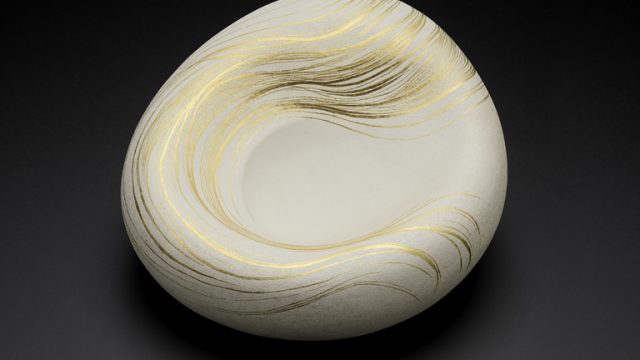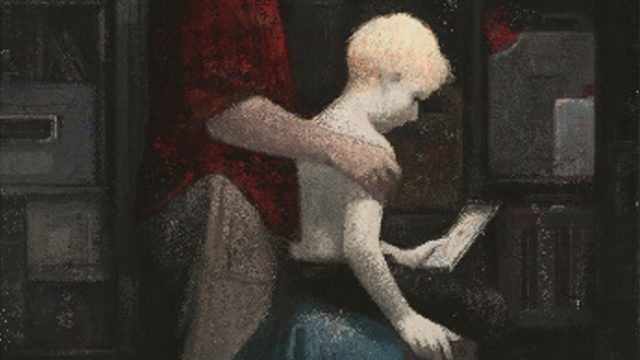Curator, Cathy Haill, celebrates the 355th anniversary of the first recorded UK appearance of popular puppet character, Mr Punch.
Mr. Punch is 355 years old in May 2017. The V&A holds the George Speaight Punch & Judy Archive, a variety of examples of Punch & Judy figures including Wal Kent’s Punch & Judy on display in Gallery 106A.
Mr Punch is a conundrum – the archetypally British figure descended from an Italian immigrant, with relatives all over Europe, including Guignol in France, Puncinello in Italy, Jan Klassen in Holland, Kasperle in Germany, Karagoz in Turkey, and Tanches in Belgium.

He is also officially a British icon, since in a 2006 government initiative to create a definitive list of British icons, Mr. Punch and the present Mrs. Punch were among the first twelve – along with fish and chips, double-decker buses, Sherlock Holmes, and the bowler hat.
With his characteristic reedy voice and handy beating stick, he is the Lord of Misrule, an anarchist, an outlaw, a punk, an adult toddler, the puppet we associate fondly with our childhood, a puppet we love, or a puppet we loathe. He inspires true and loyalty among his operators who take the name of Professor, in servitude to his mesmerising influence and that of his companions in crime, but he can also reduce children to paroxysms of tears. He is a survivor, the Marmite of the puppet world who reinvented himself from a 17th century fairground performer to the darling of drawing-room shows for aspiring Victorian families, and a fixture at the seaside.
His roots spread wide – to Ancient Greek farce, to the universal trickster of world folklore, the character of Vice in mediaeval Mystery plays, the court jester, Mr. Merryman, Shakespeare’s wise Fool – Punch claims kinship with them all.
He has appeared in countless prints, drawings and paintings, ceramics, souvenirs and greetings cards since his first recorded visit to London in 1662 with an Italian showman from Bologna, otherwise known as Signor Bologna, when Samuel Pepys first recorded his appearance as a jointed marionette in Covent Garden on 9th May:
‘Thence to see an Italian puppet play that is within the rayles there, which is very pretty, the best that ever I saw, and a great resort of gallants.
Pepys called the show Polchinello, a name relating to Punch’s descent from the Italian Commedia dell’Arte in which masked actors improvised comic knockabout plays with a number of stock characters. Polchinello or Pulliciniello was the subversive, thuggish lout whose name may have developed from the word pulcino, or chicken, referring to the character’s beak-like mask and squeaky voice.

By the early 18th century Mr. Punch was a leading character in the marionette shows of Martin Powell at Bath, where he danced in Noah’s Ark with his first wife Joan, in the biblical play The Old Creation of the World. By 1710 he was back in London, performing in the room in St. Martin’s Lane that Powell adapted as a puppet theatre, with elaborate scenery and candle footlights. He didn’t yet have his own play but appeared in a variety of Powell’s satirical plays, lampooning famous people or fashions. Whatever the story, a fight between Punch and the Devil was customary, linking him to medieval Morality plays. Occasionally the Devil won, but Punch was more usually the victor. In 1738 he had a theatre named after him, when Charlotte Clarke opened Punch’s Theatre in James Street, off the Haymarket. Her wooden cast performed satirical marionette plays, with Punch the novelty character. His absence in a satirical play by Samuel Foote at the Haymarket Theatre in 1773 using almost life-sized puppets, aroused such anger in the galleryites that The Morning Chronicle, 16 February 1773, reported:
‘they grew out of temper because Punch, his wife Joan, and Little Ben the Sailor did not make an appearance.’
Foote duly revised his show and introduced a human Punch wearing a baggy white suit and in the conical hat of his Italian ancestor Pulcinello.
By the end of the 18th century, Punch had cut the strings. A new influx of Italian showmen presented glove-puppet versions of the Punch show in small, portable booths. Punch and Judy shows became familiar sights on the streets during the 19th century, their performances often heralded by a drummer or pan-pipe player who doubled as ‘bottler’ collecting the money.
By 1818 we hear no more of Joan. Punch’s second wife Judy takes the stage, and the Italian showman Piccini introduces us to his girlfriend Polly. Punch leaves the worlds of satire and Morality plays in favour of more domestic action-packed slapstick drama, taking the Devil and the Hangman of medieval English drama with him to his enduring problems with childcare and a nagging wife.

As his hump and his paunch became more pronounced, the introduction of the railways and the development of Victorian coastal resorts took him to the seaside, which he liked to be beside, and where he stayed.
But you can’t keep Mr. Punch in a booth. He is in literature, in film, including the 1963 The Punch and Judy Man with Tony Hancock’s out-of work Punch Professor, in Harrison Birtwhistle’s sinister 1969 opera Punch and Judy, and is the leading man in Susan Hiller’s 1990 installation An Entertainment purchased by the Tate in 1995. He has been banned by councils for his violence, defended by Charles Dickens, introduced at court by Charles ll who commanded his appearance at Whitehall in 1662, and amused Queen Victoria and her children who invited him to the beach at Osborne.
Mr. Punch spans centuries of entertainment, literature, art and illustration, and can be seen in his own Festival every May in St. Paul’s Churchyard, Covent Garden, and with his Professors in the annual church service. He is a survivor known to all in this country who has outlived his fellow anarchistic Merrymen by reinventing himself as necessary, whilst retaining his swazzle-created voice. He will never conform, but will always perform. That’s the way to do it!

For more information on Punch and Judy and other puppet related objects within the V&A collections visit Search the Collections. The catalogue to the George Speaight Archive can be found on Search the Archives.


